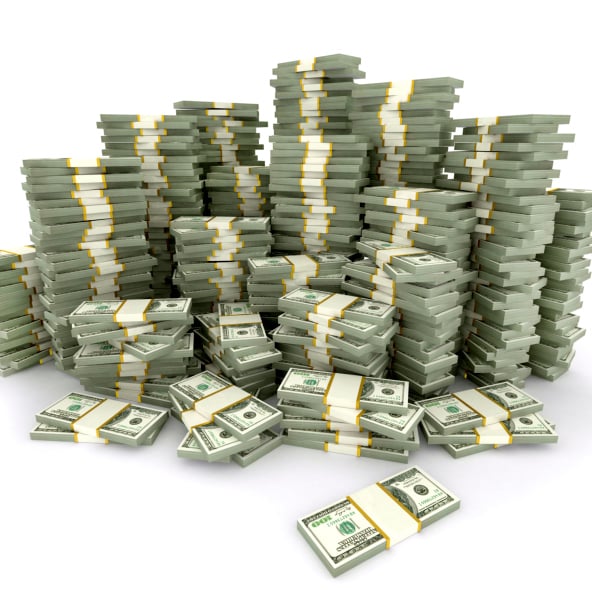Military
Here's What Boeing Should Do With Its Mountain of Cash

Published:
Last Updated:

The only thing that could have been better for Boeing Co. (NYSE: BA) shareholders than the company’s blowout fourth-quarter and full-year results would have been for the company to say that 2018 would be even better. That’s exactly what Boeing said, and investors have pushed the stock to a new 52-week high.
A quick review of the big numbers: fourth-quarter revenues of $25.4 billion and adjusted earnings per share (EPS) of $4.80, including a benefit of $1.74 from recent changes in U.S. tax law. For the year, revenues totaled $93.4 billion and adjusted EPS came in at $12.04.
Fourth-quarter operating cash flow totaled $2.9 billion and for the year cash flow totaled $13.3 billion, well above the company’s own guidance of $12.5 billion. All this is down to a record 763 deliveries of commercial planes.
One last data point: share buybacks totaled $9.2 billion in 2017, and the company’s new buyback program promises buybacks of around the same amount for the next two years.
For 2018, Boeing expects to deliver 810 to 815 new commercial planes. Essentially all those new planes will be 737s as Boeing increases production of the single-aisle jets from 47 to 52 per month. The company delivered 148 new 737s in the fourth quarter, an average of 49.3 per month. The delivery target appears to be well within range and will yield at least 50 additional deliveries this year, bringing the company’s delivery total from 763 to 813.
Deliveries also will begin for the recently certified 787-10, but these are likely to be offset by a decline in 777 deliveries as Boeing transitions to the new 777X.
Which brings us to Boeing’s operating cash flow guidance of $15 billion for 2018. The company also is currently sitting on a $9.99 billion pile of cash and short-term investments. Is a stock buyback program of $18 billion the best thing that Boeing can do with all that cash?
Scott Hamilton at Leeham News puts that amount of cash into some perspective:
Observation (no judgment): @Boeing $9.2bn in share buyback in 2017 compares with typically $10bn-$12bn single-aisle R&D, $15bn+ wide-body R&D for new airplanes. Over 6 yrs, that's $55.2bn. Boeing can easily develop new airplane by somewhat reducing buybacks.
— Scott Hamilton (@LeehamNews) January 31, 2018
Boeing just lost its trade complaint against Canada’s Bombardier, likely due to the fact that the company did not have an airplane that competed with Bombardier’s CS100. The U.S. International Trade Commission basically ruled that since there was no foul, there could be no harm. If there is a market for a 100-seat single-aisle jet, wouldn’t it be better for Boeing and its stockholders to build a competing airplane?
The company’s attempt to negotiate some sort of deal to acquire a major if not controlling stake in Brazil’s Embraer S.A. (NYSE: ERJ) would be a cheaper way to get a competitive aircraft, but the Brazilian government is virtually certain to maintain its decisive role in the company’s business. Boeing won’t go off on its own to build a competitor to the CS100 because it doesn’t think the payoff is there. That’s smart.
Not so smart is relying on a lot of marketing speak about how the 737-700 and the 737 MAX 7 are alternatives to the Bombardier CS300, the company’s next aircraft. Most analysts don’t think that’s true, and that it’s the reason Boeing filed its traded complaint against the CS100 in the first place. It’s probably unlikely that Boeing will launch an all-new design for the 737 for at least another five or more years. That gives the CS300, now part of a program controlled by arch-rival Airbus, a good head start.
That leaves the mid-market space for an airplane with a range of around 4,500 to 5,000 nautical miles (nm) and capacity for 220 to 270 passengers. Boeing has been dithering about this for more than a year, largely because Airbus has a plane that more or less fits the market requirements, the single-aisle A321LR with a range of about 4,000 nm.
Boeing has toyed with restarting its production line for the twin-aisle 767-300ER. That would shorten the time to first deliveries, but for a plane that is at least a couple of generations old.
Using Hamilton’s figures, if Boeing committed to spending $3 billion a year for six years developing a new mid-market aircraft, the company and its shareholders would have something to show for the investment instead of a relatively small improvement in Boeing’s stock price purchased with the same amount of cash. One might even argue that the company should have started its mid-market project a year or two ago, but what would be the point of that.
Take the quiz below to get matched with a financial advisor today.
Each advisor has been vetted by SmartAsset and is held to a fiduciary standard to act in your best interests.
Here’s how it works:
1. Answer SmartAsset advisor match quiz
2. Review your pre-screened matches at your leisure. Check out the
advisors’ profiles.
3. Speak with advisors at no cost to you. Have an introductory call on the phone or introduction in person and choose whom to work with in the future
Take the retirement quiz right here.
Thank you for reading! Have some feedback for us?
Contact the 24/7 Wall St. editorial team.